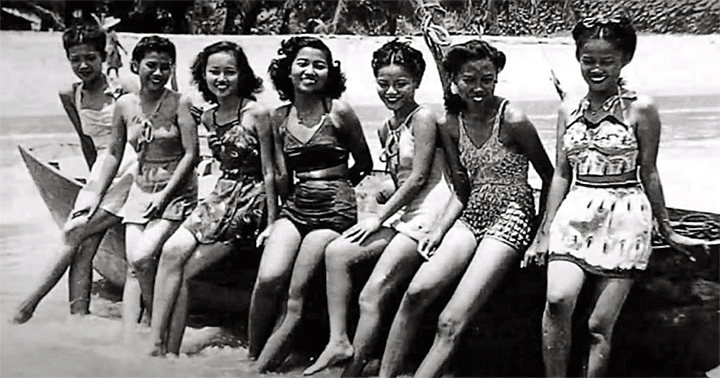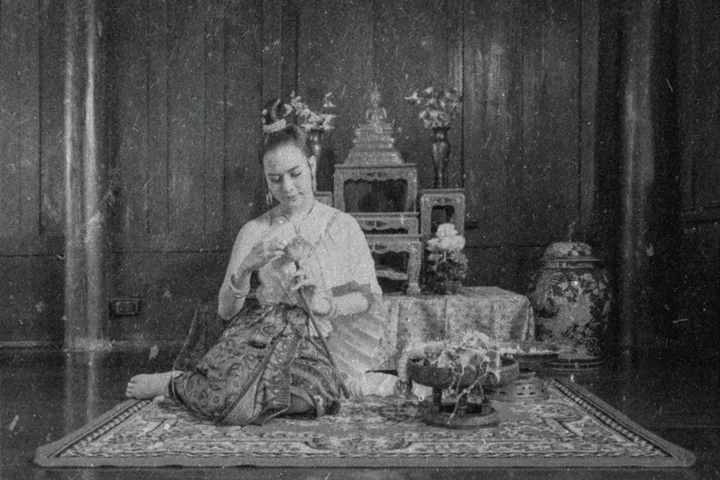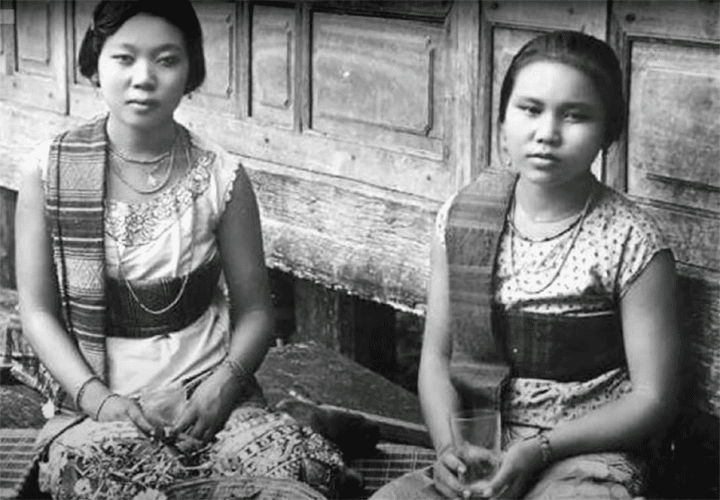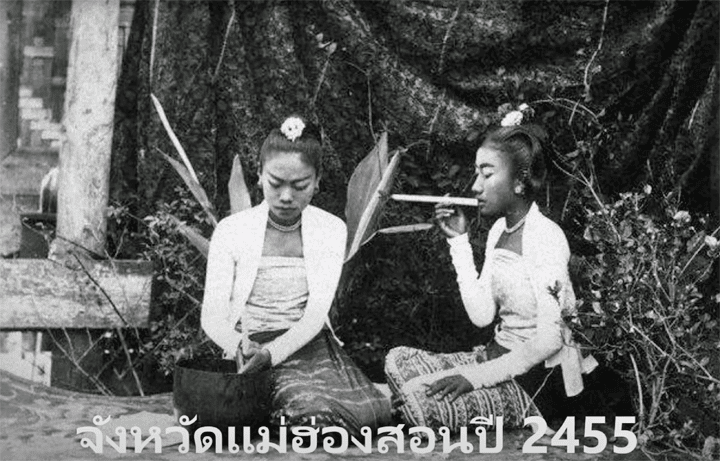Gender relations in Southeast Asia in past times

Much has been written about gender relations in Southeast Asia, including Thailand. Can we learn something from the past? What was it like 300-500 years ago? And are we seeing any of that now? Or not?
Preface
On Thailandblog there is often heated discussion about the relationship between man and woman in Thailand, whether it concerns Thai-Thai or Farang-Thai relationships. Opinions sometimes differ greatly, especially about the question to what extent and to what extent these relationships are culturally determined, in addition to personal influences. If we can assume that cultural influences are to some extent constant over the centuries, perhaps we can learn something about this if we go back in time, especially to the time before the colonization of Asia, from about 1450-1680.
To this end I translated two chapters entitled 'Sexual Relations' and 'Marriage' from Anthony Reid's book, Southeast Asia in the Age of Commerce, 1450-1680 (1988). I omit a few passages, in brackets the person who wrote about it and/or the relevant year.
"The more daughters a man has, the richer he is"
Relations between the sexes showed a pattern that clearly distinguished Southeast Asia from surrounding countries, especially in the sixteenth and seventeenth centuries. The influence of Islam, Christianity, Buddhism and Confucianism has not changed much in terms of women's relative independence and economic commitment. This could explain why the value of daughters was never questioned, as in China, India and the Middle East, on the contrary, "the more daughters a man has, the richer he is" (Galvao, 1544 ).
Throughout Southeast Asia, the dowry passes from the male to the female side of a marriage. The first Christian missionaries denounced this practice as 'buying a woman' (Chirino, 1604), but it certainly shows how valuable a woman was valued. The dowry remained the exclusive property of the woman.
Contrary to Chinese customs, the fresh couple often moved to the woman's village. Such was the rule in Thailand, Burma and Malaysia (La Loubère, 1601). Wealth was in the hands of the couple, it was jointly managed and daughters and sons inherited equally.
Women took an active part in courtship and courtship
Women's relative independence also extended to sexual relations. The literature in Southeast Asia leaves no doubt that women took an active part in courtship and courtship, demanding as much in sexual and emotional satisfaction as they gave. In the classical literature of Java and Malaysia, the physical attraction of men like Hang Tuah was extensively described. "When Hang Tuah passed by, the women wrestled from their husbands' embrace to see him." (Rassers 1922)
Equally characteristic were the earthy rhymes and songs, 'patun' in Malay and 'lam' in Thai languages, where a man and a woman tried to outdo each other in humor and suggestive remarks in dialogue.
Chou Ta-kuan (1297) tells how Cambodian women reacted when their husbands travel: 'I am not a ghost, how can I be expected to sleep alone?' In everyday life, the rule was that the marriage automatically ended if the man was absent for a longer period (half to a year).
A wreath of balls around the penis
The most graphic confirmation of women's strong position is the painful penile surgery that men underwent to enhance their wives' erotic pleasure. One of the earliest reports on this is from the Chinese Muslim Ma Huan who wrote the following about a practice in Siam in 1422:
'Before their twentieth year, men undergo an operation in which the skin just below the glans penis is opened with a knife and a bead, a small ball, is inserted each time until a ring is formed around the penis. The king and other rich people take hollow gold beads for this, in which a few grains of sand have been placed, which rings pleasantly and which is considered beautiful…'.
Pigafetta (1523) was so amazed by this that he asked a number of men, young and old, to show their penises. When a bewildered Dutch admiral Van Neck (1609) asked a few wealthy Thais in Pattani what the purpose of those golden tinkling bells was, he received the answer that 'the women experience an indescribable pleasure from them'.
Women often refused to marry a man who had not had this operation. The Kama Sutra mentions this procedure and it can be seen in a linga in a Hindu temple in central Java (mid 15th century). By the middle of the seventeenth century this custom died out in the larger trading cities on the coasts of Southeast Asia.

Wedding; monogamy prevails, divorce is relatively easy
The predominant pattern of marriage was one of monogamy while divorce was relatively easy for both parties. Chirino (1604) said that 'after 10 years in the Philippines he had never seen a man with several wives'. With rulers there were spectacular exceptions to this rule: with them an abundance of women was good for their status and a diplomatic weapon.
Monogamy was reinforced in the vast majority of the population because divorce was so easy, divorce was the preferred way to end an unsatisfactory coexistence. In the Philippines, "marriage lasted as long as there was harmony, they parted for the slightest cause" (Chirino, 1604). Likewise in Siam: "Husband and wife separate without much hassle and divide their goods and children, if it suits both, and they may remarry without fear, shame, or punishment." (eg Schouten, van Vliet, 1636) In South Vietnam and Java women often took the initiative for a divorce. "A woman, dissatisfied with her husband, can demand a divorce at any time by paying him a fixed sum of money." (Raffles, 1817)
Indonesia and Malaysia: many divorces. Philippines and Siam: the children are divided
Throughout the area, the woman (or her parents) kept the dowry if the man took the lead in a divorce, but the woman had to pay back the dowry if she was largely responsible for the divorce (1590-1660). At least in the Philippines and in Siam (van Vliet, 1636) the children were divided, the first going to the mother, the second to the father, etc.
We also see this pattern of frequent divorces in higher circles. A chronicle kept in the seventeenth century at the court of Makassar, where power and property had to play a major role, shows how a divorce was not described as a decision of a powerful man alone.
A fairly typical female career is that of Kraeng Balla-Jawaya, born in 1634 into one of the higher Markassarian lineages. At the age of 13 she married Karaeng Bonto-Marannu, later one of the most important war leaders. She divorced him at the age of 25 and soon remarried his rival, the prime minister Karaeng Karunrung. She divorced him at the age of 31, probably because he was exiled, after which she married Arung Palakka two years later, who, with Dutch help, was conquering her country. She divorced him at 36 and eventually died at 86.
'South East Asians are obsessed with sex'
The high divorce rates in Indonesia and Malaysia, up to the sixties of the last century above fifty percent, are attributed to Islam, which made divorce very easy for a man. More important, however, is the female independence that existed throughout Southeast Asia, where divorce could not clearly harm a woman's livelihood, status, and family relationships. Earl (23) attributes the fact that women of 1837 years old, living with their fourth or fifth husband, were accepted in the Javanese community entirely to the freedom and economic independence enjoyed by women.
Until the eighteenth century, Christian Europe was a relatively 'chaste' society, with a high average age at marriage, a considerable number of singles and a low number of births out of wedlock. Southeast Asia was in many ways the complete opposite of this pattern, and European observers at the time found its inhabitants to be obsessed with sex. The Portuguese held that the Malays "loved music and love" (Barbosa, 1518), while Javanese, Thais, Burmese, and Filipinos were "very voluptuous, both men and women" (Scott, 1606).
This meant that premarital sexual relations were condoned and virginity in marriage was not expected by either party. Couples were supposed to marry when pregnant, otherwise abortion or infanticide was sometimes decided, at least in the Philippines (Dasmarinas, 1590).

Europeans are amazed at the fidelity and commitment within a marriage
On the other hand, Europeans were amazed at the fidelity and devotion within a marriage. The women of Banjarmasin were faithful in marriage but very loose as singles. (Beeckmann, 1718). Even Spanish chroniclers, not particularly fond of the sexual morality of the Filipinos, admitted that "men treated their wives well and loved them according to their customs" (Legazpi, 1569). Galvao (1544) marveled at how Moluccan wives '..remain always chaste and innocent, although they walk about almost naked among men, which seems almost impossible with such a debauched people'.
Cameron (1865) is probably right to see a connection between the ease of divorce in rural Malay and the tenderness that seems to characterize marriages there. Women's economic independence and their ability to escape an unsatisfactory marital status force both parties to do their best to maintain their marriage.
Scott (1606) commented on a Chinese man who beat his Vietnamese wife in Banten: 'This could never happen to a local woman because Javanese cannot tolerate their wives being beaten.'
Virginity is an impediment to entering into marriage
Curiously, virginity in women was seen more as a hindrance than an asset in entering into marriage. According to Morga (1609), before the arrival of the Spanish there were (ritual?) specialists in the Philippines whose task was to deflower girls because 'virginity was seen as an obstacle to marriage'. In Pegu and other ports in Burma and Siam, foreign traders were asked to deflower brides-to-be (Varthema, 1510).
In Angkor, priests broke the hymen in a costly ceremony as a rite of passage to adulthood and sexual activity (Chou Ta-kuan, 1297). The Western literature offers more incentives than explanations for this kind of practice, aside from the suggestion that South East Asian men prefer experienced women. But it seems more likely that men saw the blood of the breaking of the hymen as dangerous and polluting, as they still do in many places today.
Foreigners are offered a temporary wife
This combination of premarital sexual activity and easy separation ensured that temporary unions, rather than prostitution, was the primary means of coping with the influx of foreign traders. The system in Pattani was described by Van Neck (1604) as follows:
'When foreigners come to these countries on business they are approached by men, and sometimes by women and girls, asking if they want a wife. The women present themselves and the man can choose one, after which a price is agreed for a certain time (a small amount for a great pleasure). She comes to his house and is his maid during the day and his bedfellow at night. However, he cannot associate with other women and they cannot associate with men… When he leaves he gives her an agreed amount and they part in friendship, and she can find another husband without any shame.'
Similar behavior has been described for Javanese traders in Banda during the nutmeg season and for Europeans and others in Vietnam, Cambodia, Siam and Burma. Chou Ta-kuan (1297) describes an additional benefit of these customs: 'These women are not only bedfellows, but often sell goods, supplied by their husbands, in a shop which yields more than the wholesale trade.'
Disastrous infatuation between Dutch merchant and Siamese princess
Outsiders often found this kind of practice strange and repulsive. 'Infidels marry Muslim women and Muslim women take an infidel for husband' (Ibn Majid, 1462). Navarette (1646) writes disapprovingly: 'Christian men keep Muslim women and vice versa.' Only if a foreigner wanted to marry a woman close to the court was there strong opposition. The disastrous love affair between a Dutch merchant and a Siamese princess was probably responsible for King Prasat Thong's 1657 ban on marriages between a foreigner and a Thai woman.
In a number of large port cities with a Muslim population, these types of temporary marriages were less common, for which slave women were often used, who could be sold and had no right to the children. Scott (1606) writes that Chinese traders in Banten bought female slaves from whom they fathered many children. Then when they returned to their homeland, they sold the woman and took the children with them. The English had the same habit if we can believe Jan Pieterszoon Coen (1619). He rejoiced that the English traders in South Borneo were so impoverished that they had to 'sell their whores' in order to get food.

Prostitution only emerged at the end of the sixteenth century
Prostitution was therefore much rarer than a temporary marriage, but it did emerge in the major cities at the end of the sixteenth century. The prostitutes were usually slaves belonging to the king or other nobles. The Spaniards told of this kind of women who offered their services from small boats in the 'water city' Brunei (Dasmarinas, 1590). The Dutch described a similar phenomenon in Pattani in 1602, although it was less frequent and honorable than temporary marriages (Van Neck, 1604).
After 1680, a Thai official obtained official permission from the court in Ayutthaya to set up a prostitution monopoly involving 600 women, all enslaved for various offences. This seems to be the origin of the Thai tradition of earning a decent income from prostitution (La Loubère, 1691). Eighteenth century Rangoon also had entire 'whore villages', all slave girls.
Collisions with the precepts of Christianity and Islam
This wide range of sexual relations, relatively free premarital relations, monogamy, marital fidelity, a simple way of divorce and the strong position of women in sexual play increasingly clashed with the precepts of the major religions that grip on this region gradually strengthened.
Premarital sexual relations were severely punished under Islamic law, leading to the giving of (very) young girls in marriage. This was of even greater importance to the wealthy urban business elite, where the stakes were higher in terms of status and wealth. Even in Buddhist Siam, unlike the general population, the elite very carefully guarded their daughters until marriage.
The growing Muslim community cracked down on sexual offenses involving married people. Van Neck (1604) witnessed the outcome of a tragic affair in Pattani where a Malay nobleman was forced to strangle his own married daughter because she had received love letters. In Aceh and Brunei, such death sentences must have been quite common according to Sharia law. On the other hand, Snouck Hurgronje mentions in 1891 that such extreme practices of the urban elite had barely penetrated the countryside beyond.
The great Arab traveler Ibn Majib complained in 1462 that the Malays "do not see divorce as a religious act." A Spanish observer in Brunei noted that men could divorce their wives for the most 'silly reasons', but that divorce was usually done on a mutual basis and entirely voluntarily, with the dowry and children being divided among themselves.


Quote from Tina:
When foreigners come to these countries on business they are approached by men, and sometimes by women and girls, asking if they want a wife. The women present themselves and the man can choose one, after which a price is agreed for a certain time (a small amount for a great pleasure). She comes to his house and is his maid during the day and his bedfellow at night. However, he cannot deal with other women and they cannot deal with men. …When he leaves he gives her an agreed amount and they part in friendship, and she can find another man without any shame
Then nothing has actually changed in Thailand after 4 centuries.
This still happens every day in Thailand.
Except that the woman no longer has to work during the day.
They still hang your swimming trunks on the washing line, sometimes do a small hand wash and sweep the bungalow a bit. If they do at all.
Hans
Although @Hans posted his response more than 5 years ago, the statement is: “She comes to his house and is his maid during the day and his bedfellow for the night. However, he cannot deal with other women and they cannot deal with men.” still in effect, indeed. It forms the basis on which many farang drive away their loneliness and do not have to lose time in relationship building or formation. It all takes place immediately: getting acquainted, arranging a visa, that's it.
Enjoyed reading this piece of history.
Thank you Tino for taking the trouble to translate this piece of history.
Over the centuries described here, I recognize, surprisingly, today in this piece of history quite a bit of the way of thinking, acting and behavior of the Asians, especially the position of women in marriage and relationship, divorce and hair, also economic independence.
Nico B
Dear Nico,
I think you should say Southeast Asia because elsewhere, such as China and India, things were very different. Moreover, there was a big difference between the attitude of the elite and the 'common people'. In Thailand, the women of the elite were sheltered and protected in the palaces while the 'common people' were fully involved in work and festivity.
Nice piece of history Tino, which shows that everything has its origin and that some traditions seem to be socially entrenched. Pigafetta also gives a description of the house/palace of Al Mansur, the reigning monarch of Ternate, who has an overview of his entire harem of one woman per family from his dining table. An honor for the women to be admitted to the harem and of course an intensive competition to bring the first offspring into the world. At the same time, all families are serfs to the monarch.
Beautifully written and everyone recognizes themselves a bit in this story. But all over the world women are looking for happiness-love and security.Especially in countries where there is no social security and pension.What to do when they are old and much less attractive- we see that enough when we travel in Asia.
Otherwise, we are lucky to have been born in Europe.
A few striking descriptions in this well written piece by Tino.
If women could function independently, divorce would hardly be a problem for them.
The Islamic religion is going to interfere in this area.
According to them, marital sex is not allowed; then you take (marry off) a very young girl, disgusting!
Taken from Mohammed! Divorce is very easy for the man; this is discriminating against the
woman, who apparently does not count. Even Sharia is applied!
Due to a “temporary” marriage, there is no prostitution in Thailand! and therefore not punishable.
How peaceful some holidaymakers will sleep in this construction next to their “husband” of 2 months.
OK, Louis. Mohammed married Khadija, 25 years his senior, at the age of 15. She was a fairly wealthy and independent caravan trader, Mohammed participated in her business. . They lived monogamously and happily together for 25 years until Khadija passed away. They had a daughter together named Fatima.
Then Muhammad gathered a number of wives including Aisha, his most beloved. He married her when she was 9 (?) years old and 'knew' her after puberty. That's what the scriptures say. Mohammed thought that you could only marry a second etc. wife to help the woman (poor, sick, widow, etc.). Sexual lust was not allowed to play a role in this. Given the weakness of the male sex, the question is whether that was always the case :).
Aisha was also an independent woman with a good mouth. She once went out all alone (shame!) into the desert, mounted on a camel (there were no cars then) and got lost. A man found her and brought her back home. Mohammed flew into anger and jealousy. Aisha defended herself in strong terms. Later Muhammad apologized. That's what the scriptures say.
Much of what we now think of as Islamic Sharia law was written centuries after Muhammad's death and often does not reflect Muhammad's views. The same goes for Moses, Jesus and the Buddha.
Or how Christianity and Islam have made gender equality disappear. Even now we can take an example from the society where women made independent decisions about their lives.
What an interesting piece, thanks!
Certainly an interesting piece, thanks for this A person is never too old to learn and we do that from each other, provided we stand up for this. I conclude that little changes in life and much of the same can still be found on our globe today. There are still strange characters in my view, criminals and murderers to name a few. The reasons for displaying this kind of behavior can be guessed at, but they never justify much of what has happened in the past and present.
Man in his diversity. It would be so nice if, in addition to the people who do good and contribute to a loving and social society, where respect predominates, more people would follow this. I fear that will no longer be possible and may turn out to be an illusion, because the reason why so many people are born who are involved in matters that the light of day cannot tolerate is still a mystery to me.
Moderator: We posted your question as a reader's question today.
Dear Tina,
Enjoyed reading your story. I have traveled around Asia for 30 years and recognize many of your examples.
The most / most beautiful thing I have seen in this same context was in Lijiang, Yunnan China and concerns the Naxi minority group, who still maintain a matriachal society.
Beautiful to see, history flies at you.
With fr.gr.,
According to
Dear Tino
After being 'away' for so long I am back and have read your story with interest. Is that all in Anthony Reid's book? Also the photos? I am especially interested in marital relations in Indonesia. Thanks in advance for your answer. Hopefully you remember who I am!
Kind regards
Maud